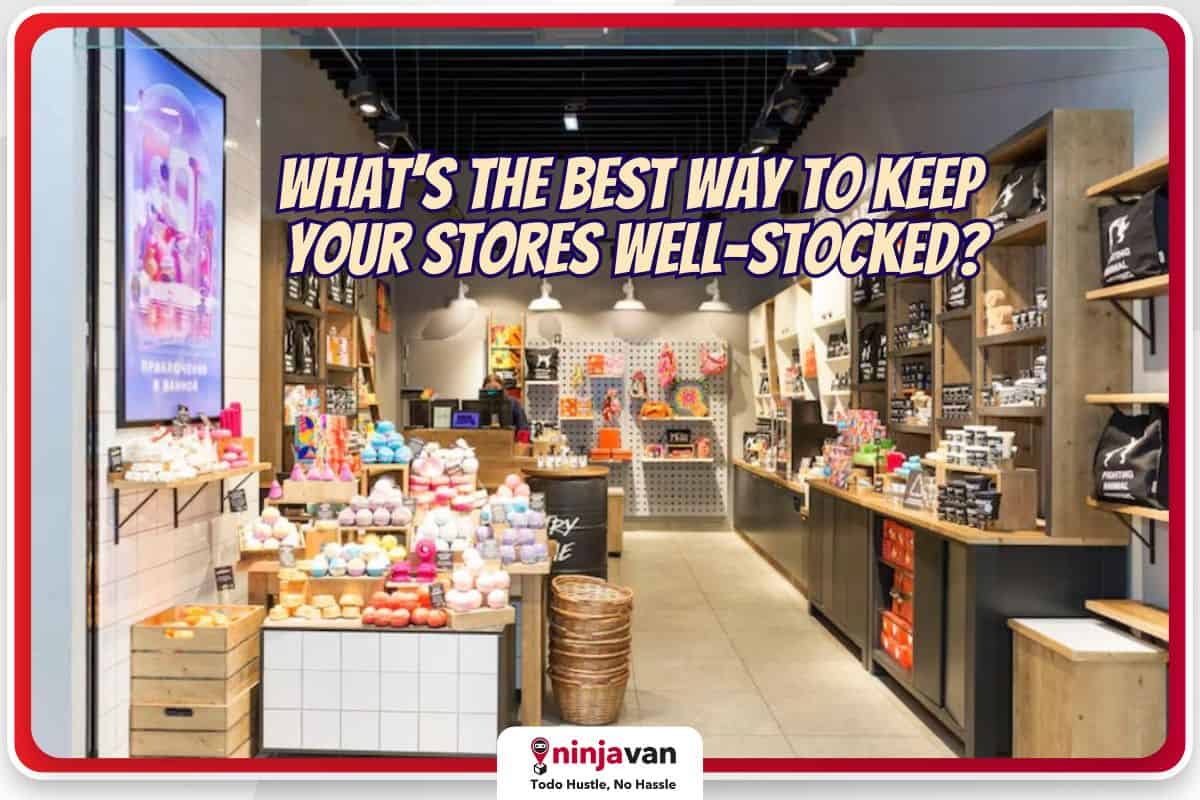It may seem basic, but without enough stocks of your best-selling goods or products, how can your business even generate profit to continue operating?
Stock inventory is an essential part of supply chain management. Guaranteeing product availability can influence long-term business, high order volumes and timely deliveries, thus preventing supply chain issues.
Let’s look into the importance of maintaining adequate inventory. We’ll also provide a seamless solution regarding managing and transporting your stocks efficiently.
Also read: Common Inventory Management Problems and Solutions
But first, what is stock inventory?
Stock inventory or stock availability refers to the assortment of goods and products that a business holds for future sale or use in its operations. It includes raw materials, work-in-progress items and finished goods that are ready for distribution.
Impact of low stock inventory
Not having enough stocks of your inventory already places your business at a disadvantage against your competitors, but here’s how it can be damaging to your brand:
- Stockouts and lost sales. When items are unavailable, businesses lose out on potential revenue and risk alienating customers.
- Customer complaints and dissatisfaction. Out-of-stock (OOS) situations often result in frustrated customers, tarnishing the reputation of the business.
- Backorders and delays. Fulfillment delays can disrupt the supply chain, leading to unhappy clients and decreased efficiency.
- Impact on revenue and profits. Insufficient inventory directly impacts the bottom line, affecting profitability and growth.
- Reduced operational efficiency. Inefficient inventory management processes can drain resources and hinder operational effectiveness.
- Missed opportunities for growth. Limited inventory can restrict business expansion and hinder scalability.
- Impact on the brand’s reputation. Consistent stock shortages can erode consumer trust and brand loyalty.
Given these potential risks, what can your business do to address possible inventory issues? The answer lies in knowing how to efficiently manage product restocking or stock replenishment.
So, what is stock replenishment?
Stock replenishment, also known as inventory restocking, involves resupplying goods or products to cater to consistent customer demand and maintain optimal inventory levels. It involves identifying when stocks of certain items are running low and taking proactive steps to immediately replenish them.
Efficient stock replenishment ensures that businesses have enough inventory on hand to fulfill orders and avoid stockouts.
Stock replenishment involves the following:
- Forecasting demand
- Monitoring inventory levels
- Executing restocking orders
The entire process can include placing purchase orders with suppliers, scheduling production runs for manufactured goods or transferring inventory between different locations.
The goal of stock replenishment is to find the balance between having sufficient inventory to meet customer demands without overstocking, which can potentially leave your business illiquid and lead to storage costs and obsolescence risks.
By optimizing stock replenishment processes, businesses can:
- Improve inventory management efficiency
- Reduce stock outs/OOS goods
- Avoid overstocking or understocking

6 ways to improve inventory restocking
To address the challenges associated with stocks inventory, businesses can adopt the following strategies:
1. Implement an inventory management system
An inventory management software allows your business to track inventory levels, monitor sales trends and automate replenishment processes.
For small to medium businesses looking to scale, this is an essential and cost-effective upgrade to consider if you have the resources.
2. Conduct regular inventory audits
Conduct routinary audits of your inventory to reconcile physical stock counts with recorded inventory levels, identifying discrepancies, reducing accuracy issues and implementing corrective measures.
Depending on your industry, determining the frequency of audits – whether it’s weekly, monthly or quarterly – will ensure that your business can replenish its stocks in a timely manner.
3. Leverage data for accurate demand forecasting
Harness historical sales data, market trends and customer insights to forecast demand accurately, enabling you to make informed decisions when it’s time to restock your inventory.
While achieving a 100% accurate forecast can be ambitious for any business, having sufficient data at your disposal helps your business improve stock replenishment.

to restock your inventory.
4. Use data analytics to optimize inventory
B2B ecommerce businesses can also use data analytics tools to analyze inventory performance, identify slow-moving or obsolete items and optimize inventory allocation.
On top of improving forecasting figures for demand, using data and analytics to monitor the movement of inventory also helps you make more informed decisions when it comes to restocking, R&D or product innovation.
5. Strengthen supplier partnerships
Cultivate good relationships with suppliers to ensure reliable and timely delivery of goods, negotiate favorable terms and collaborate on demand planning initiatives. This will have a positive impact on your business and give you a competitive edge on the market.
6. Find a reliable B2B logistics partner
If your business lacks the resources to ensure timely, efficient and affordable product restocking, partnering with a B2B logistics provider like Ninja Van is a strategy to consider. This will help streamline your inventory replenishment, optimize supply chain efficiency and enhance customer satisfaction.
Ninja Restock for seamless inventory replenishment
Inventory restocking for a small to medium enterprise can be tricky to navigate. The regular challenges include:
- High truck rental costs to transfer goods or inventory
- Tendency to over/understock
- Slow transportation of goods or inventory
- Always waiting for truck availability from providers
- Paying for extra space to store overstocks
- Can’t expand to more locations outside of the city

Ninja Restock empowers businesses like yours through cost-efficient, fast and optimized inventory transport solutions. You can keep your stores well-stocked and immediately move your goods when you need them, where you need them.
Designed to cater to the needs of small to medium-scale enterprises, Ninja Restock specializes in providing less-than-truckload transportation of goods or inventory, faster than other providers.
No more expensive truck rentals, no need to manage to build your own fleet. Ninja Restock gives you the following advantages:
- Wider area coverage (deliveries to even rural areas)
- Fast nationwide deliveries (1-2 days within GMA and 3-5 days to provinces)
- Smaller load requirement – minimum 1 cubic meter (CBM)
- More affordable – pricing is based on per CBM
- Flexibility on order or pickup schedule (even daily)
- Set pricing – no hidden or additional charges
- Best for small or growing business with less than truckload (LTL) shipment
Partner with Ninja Restock now for safe, dependable and hassle-free restocking. As we deliver nationwide, we’re also positioning your business for easy expansion and growth.
Connect with your Ninja Restock team today!
More tips to streamline your business logistics:
6 Signs You Need to Outsource Your Order Fulfillment
How Less-Than-Truckload Shipping Benefits Small Businesses
How 3PLs Help Your Ecommerce Business Grow







